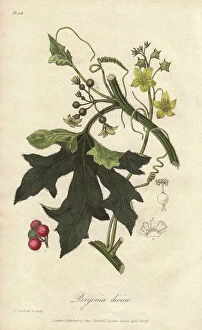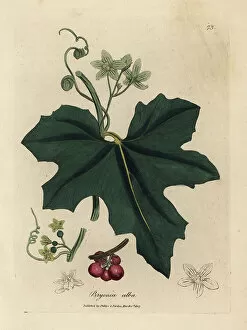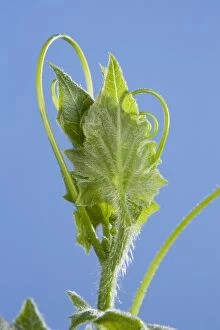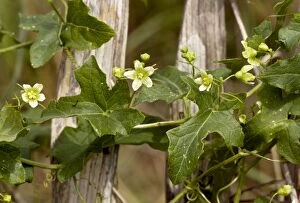Bryonia Collection
"Bryonia: A Versatile and Beautiful Plant in the World of Botany" Bryonia, scientifically known as Bryonia Dioica
All Professionally Made to Order for Quick Shipping
"Bryonia: A Versatile and Beautiful Plant in the World of Botany" Bryonia, scientifically known as Bryonia Dioica, is a fascinating plant that has captured the attention of botanists and nature enthusiasts alike. This antique botany illustration showcases its exquisite beauty, depicting both White Bryony (Bryonia dioica) and Black-berried white bryony (Bryonia alba). The delicate white flowers of this species are truly enchanting. Another variation of this remarkable plant is the Red-berried bryony (Bryonia cretica subsp. Dioica), which adds a vibrant touch to any landscape. Curtis British Entomology Plate 686 captures its allure perfectly, showcasing the intricate details of its red berries. Renowned herbalist Leonhart Fuchs recognized the medicinal properties dioica or Vitis alba, as depicted in his masterpiece "De historia stirpium. " Its usage in traditional medicine further highlights its significance among medicinal and herbal plants. Briony, also known as Black Briony or Asparagus, was highly regarded during Victorian times for its unique attributes. Butchers Broom Victorian Botanical Illustration portrays it elegantly with meticulous detail. In addition to its aesthetic appeal, Bryonia possesses impressive climbing abilities. It thrives on old Leylandii hedges like a vigorous wild plant, adding charm to any surroundings. Its melonleaf gourd counterpart Cayaponia laciniosa brings an exotic touch to gardens with its distinctive features. Whether admired for their visual splendor or valued for their therapeutic qualities, these various species continue to captivate our imagination. Their presence serves as a reminder that nature's wonders never cease to amaze us.




















